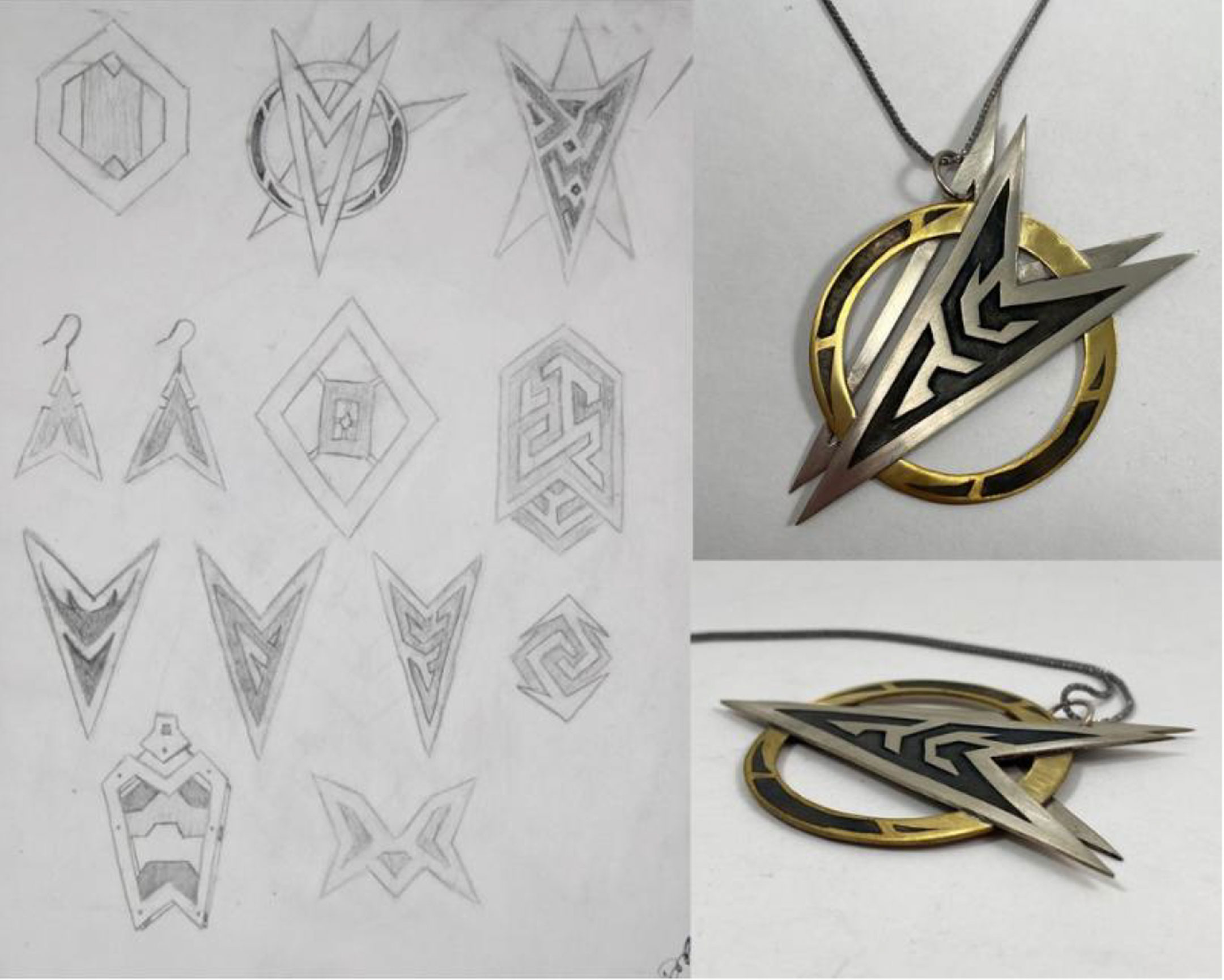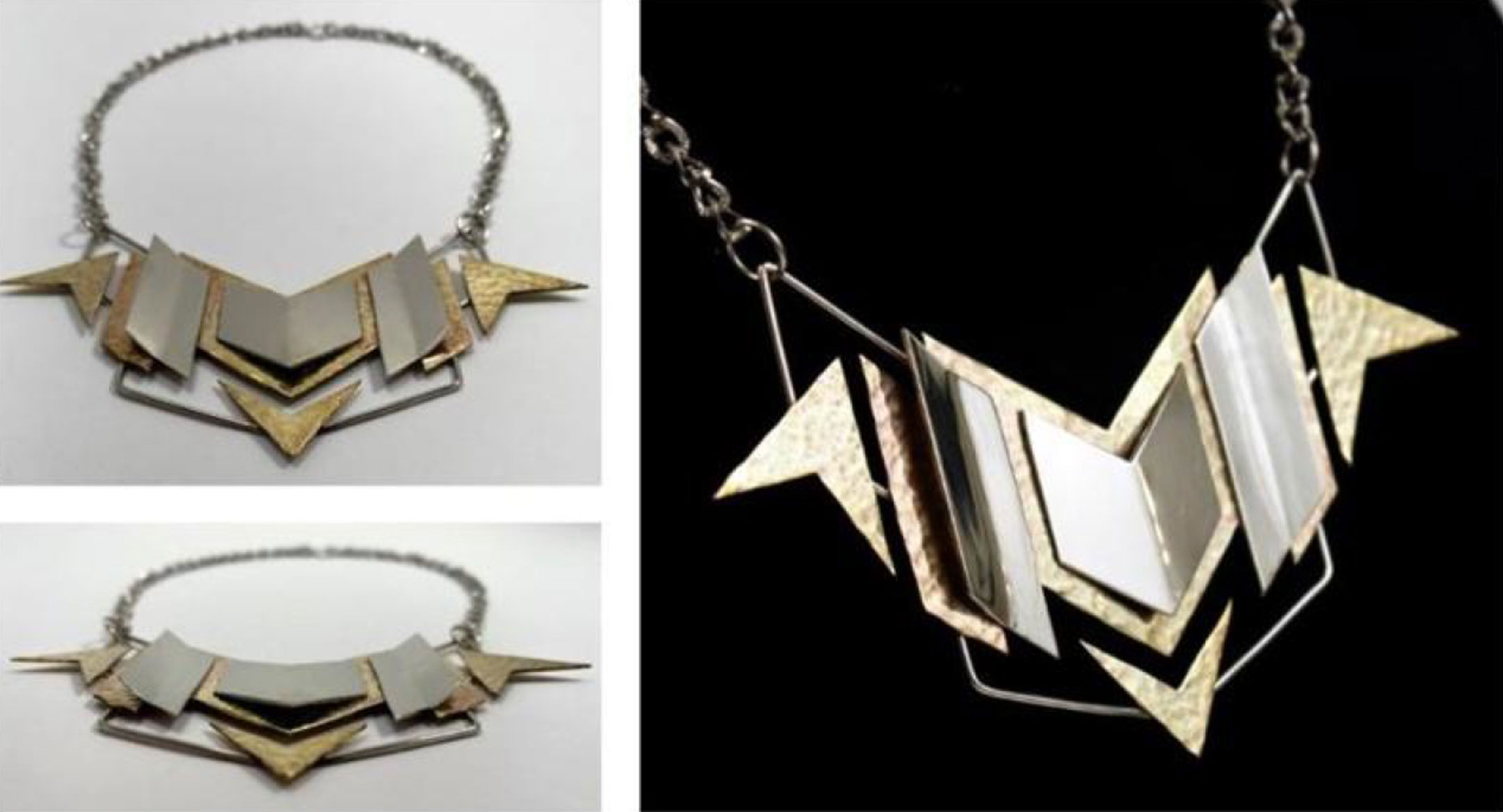AP Art of the Week
Spotlight on Artist Anthony Palombit
Welcome to The Elective’s digital art museum, dedicated to the incredible work of AP Arts students. This week we feature a wearable piece made by Anthony Palombit from Avondale High School in Auburn Hills, Michigan.
Welcome to The Elective’s digital art museum, dedicated to the incredible work of AP Arts students. Each week we highlight a work or series created in one of the AP Arts concentrations—AP 2-D Art and Design, 3-D Art and Design, and AP Drawing (the AP Program also offers Art History and Music Theory)—as well as a statement from the artist (and, occasionally, their teacher).
From the first cave paintings to contemporary breakthroughs in virtually reality, art, in all its forms, has been a crucial way for people to process, make sense of, comment on, and grapple with the world around them. In 2020, there is a lot to process and grapple with—and AP Art students have risen to the challenge. The work many of them submitted in their final portfolios is explicitly of the moment, from commentary on the covid-19 pandemic to the celebration of people of color to the nature of heroism in perilous times.
The work is often challenging and provocative but always insightful, inspiring, and expansive.
This week we feature a wearable piece made by Anthony Palombit from Avondale High School in Auburn Hills, Michigan.

Here’s Anthony’s statement on the work:
“In this body of work, I explored how geometric shapes can be combined to represent or create strength in the world. Shapes can be used as symbolic accessories, as well as in architectural structures. Geometric shapes allowed me an opportunity to express a connection between aesthetics, symbolism, and functionality.
“I started creating wearable pieces inspired by the simplicity of geometric shapes and how when combined they look complex and strong. The idea of using geometry can represent strength to the wearer. Each jewelry piece informed the next as I explored different techniques. I extended my exploration in creating three-dimensional geometric sculptures, and I was inspired by different architecture.

“'Pyramid' was inspired by Egyptian pyramids and Djed pillars, an ancient symbol meaning 'stability.' 'Framework' was inspired by the overall framework used in most architectural structures. It looks fragile, but the frame is strong while the wood surface is an aesthetic façade. 'Suspension' was inspired by suspension bridges which are built to be light but strong. Geometric shapes allowed me an opportunity to express a connection between aesthetics, symbolism, and functionality. Over time it’s evident that I grew in my exploration of research, as well as techniques.”
And here are a few more images from Anthony’s portfolio:

This piece was inspired by suspension bridges, which are light, strong, and support a lot of weight. Saw nickel. Saw, bend and drill holes in tubes. Feed wire in holes. Cut, stain, attach wood.

Twenty-gauge brass and nickel sheet metal. Nickel blackener. Saw 3 shapes. Salt-water etch design. Solder layers together. Nickel blacken. Sand raised layers.

Twenty-gauge brass and nickel sheet metal. Sixteen-gauge nickel wire. Saw shapes. Hammer texture on brass. Form nickel and wire. Solder together. Sand and polish.
Student statements are lightly edited for length and clarity.


